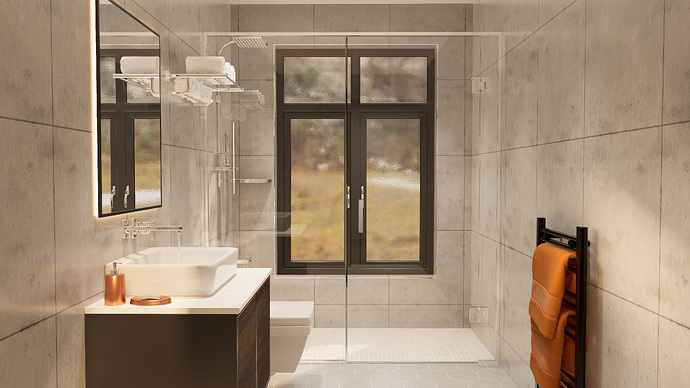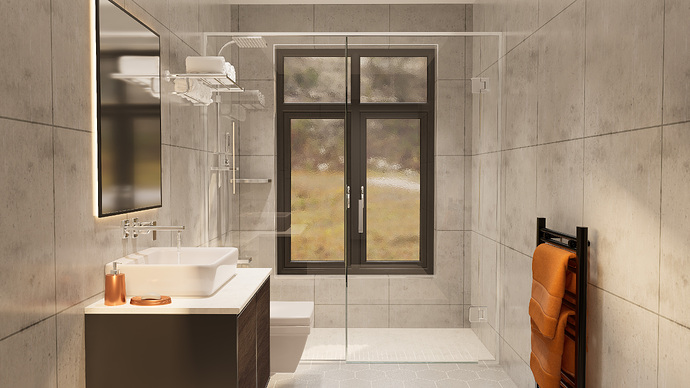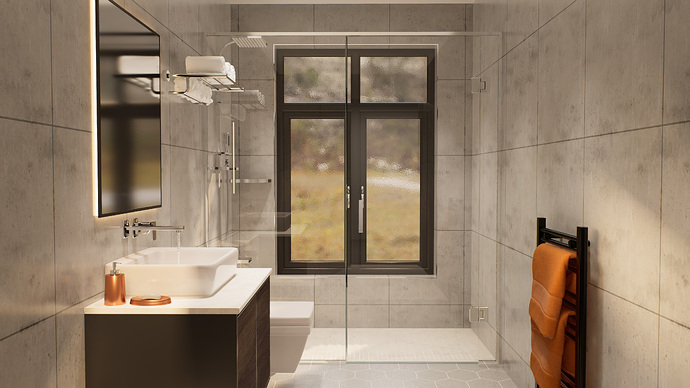There seems to be an issue and difference in how reflections/roughness are handled between rendering an image and rendering a video, even if they’re both the same resolution, aspect ratio and format (png).
Image Vs Video - Default Mirror Material - 0 Roughness
D5_Image_Default Mirror is an image render with a default mirror material on both the mirror and the chrome elements such as the faucet and shower frame. The reflections in this render are fine.
D5_Video_Default Mirror is the first frame of a video render with a default mirror material on both the mirror and the chrome elements such as the faucet and shower frame. The image is visibly darker. Most reflections are ok, except for the reflection of the shower frame, which is reflected as black in the wall material.
Image VS Video - Default Mirror Material - 0.1 Roughness
D5_Image_Default Mirror (Rough 0.1) is an image render with the same material set to 0.1 roughness. Here is still ok, but notice how the reflection of the towel shelf in the shower glass is now black and lost all detail.
D5_Video_Default Mirror (Rough 0.1) is the first frame of a video render with the same material set to 0.1 roughness. The image is visibly darker and the reflections of the towel shelf and the window handles are now all black in the mirror and the shower glass, there’s also plenty of other more subtle things not reflecting well as there’s a lot more black reflections in the faucet, shower shelving etc.
It seems the image render handles reflections better than video render, which I assume comes down to the way you have set up the render parameters, and most likely reduced the number of ‘bounces’ (or whatever the equivelant is) for video rendering. I love that D5 Render has such simple settings for export, but it’d be great if we could at least have an option to render videos with the same render settings as image rendering so we can maintain better reflections?



